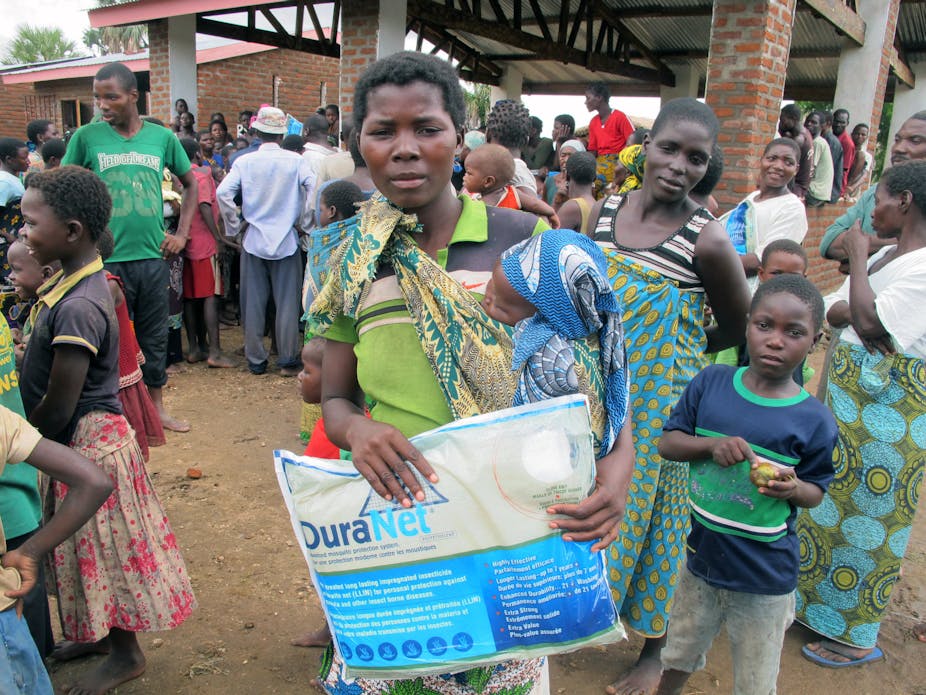Malaria is a major health problem in Malawi. Each year millions of cases are recorded – most are pregnant women and children under the age of five.
Eliminating malaria – or at least reducing the burden to a point where it has no public health significance – has become a national priority in the country.
As a result Malawi has a bevy of policies and guidelines that have been developed to help tackle the challenges presented by the disease. These relate to prevention, diagnosis and treatment. These guidelines and policies have had some success. One major feat is that malaria prevalence in the country dropped by 10%, from 43% to 33% between 2010 and 2014.
But in my research I identify one of the major factors that’s stopping Malawi from making even greater progress. This is that research isn’t being fully used in the country’s efforts to move from malaria control to elimination. This is a major problem, and one that’s experienced in many other low and middle income countries that are also finding it difficult to use evidence based research to refine and adjust policies to suit local conditions.
On top of this Malawi doesn’t have the necessary resources to implement the policies its agreed to implement.
Implementation challenges
Most of the policies that have been introduced in Malawi are in line with the World Health Organisation’s recommendations as well as the global eradication campaign, the Roll Back Malaria Partnership. They are based on interventions that have had international success. But Malawi falls short because it’s failed to act on problems that have been identified through research.
One example is the need to destroy mosquitoes breeding sites. For this to be effective, research shows it needs to take place at a specific time of the season when the breeding sites are at their peak. But in most instances resources are only made available late when the breeding sites are no longer critical.
There’s also the example of the National Malaria Treatment Guidelines. The guidelines were updated in 2007 to ensure that everyone who tested positive would get treated immediately. For this policy to be effective, the drugs need to be readily available in all health facilities.
But evidence shows that there are drug shortages at most of them, despite the fact that there are adequate stocks at the central and district levels. Research attributes the shortages to theft, stock mismanagement, poor record keeping, and inadequate storage facilities.
Other interventions are also hamstrung by a lack of resources. Take spraying inside homes with insecticides. The government agreed that this should be scaled up and rolled out in all 28 districts in the country, beginning with those with high malaria transmission rates. But since 2010, homes in only eight districts have been sprayed with insecticides because of a lack of resources.
In addition, health facilities in rural villages have severe shortages of health care workers. This means that health care is often metered out by someone who’s not a trained professional and may not follow what is stipulated in the policy.

It also means that no proper records are kept. This in turn translates into Malawi’s national health management information system lacking critical information that could inform policy decisions. Data entered at health centre level feeds into the district to regional and finally at the national level.
Reconsider the policies
For malaria control to improve in Malawi, each policy needs to be thoroughly assessed to identify the implementation challenges.
And when new policies are developed, policymakers need to understand which factors could influence implementation. Anticipating the potential barriers would give them room to develop strategies to overcome them.
There is no “one-size-fits-all” approach in addressing the barriers to managing malaria. But the factors that are getting in the way of implementation need to be assessed, preferably through research.
The findings must then be put to use to tackle the shortcomings. The relationship between researchers and policymakers should be a continuous interaction that creates trust and understanding to improve research uptake. There also needs to be strong political commitment to help Malawi shift from prevention to elimination.

